In optical data communication, receiving either too much or too little optical power will cause high bit error rates. The receiver amplifier will saturate if power is excessive, or generate noise when interferes with the signal if power is insufficient. In order to solve the problem of too much optical power at the receiver, using a fiber optic attenuator is a good solution.
Fiber optic attenuator or optical attenuator is a passive device used to reduce the power level of an optical signal without appreciably distorting the waveform. To achieve power loss, technologies including air-gap, absorption, scattering, and interference filter are often used for the attenuator products. Fiber optic attenuator can be fixed, manually or electrically adjustable. Furthermore, according to different types of connectors, there are also various classifications of optical attenuators as LC, SC, ST, FC, MU or E2000, etc. This article will introduce some basic working principles and commonly used types of optical attenuators.
Working Principles
With the development of optical technologies, fiber optical attenuator has adopted many principles to help reduce optical power. Here are some of the working principles applied to the fiber optical attenuator:
- Gap-loss Principle: Gap-loss principle uses an in-line configuration when inserting the optical attenuator in the fiber path to reduce the optical power level. The gap enables light to spread out as soon as it leaves the fiber end from the transmitter. Then some of the light will enter the fiber cladding before it reaches the receiver. However, optical attenuator using gap-loss principle is sensitive to the modal distribution, which means it should be placed near the optical transmitter. Otherwise, the attenuator will be less effective to get enough power loss if being put far away from the transmitter. This kind of problem can be avoided when using the absorptive or reflective principles.
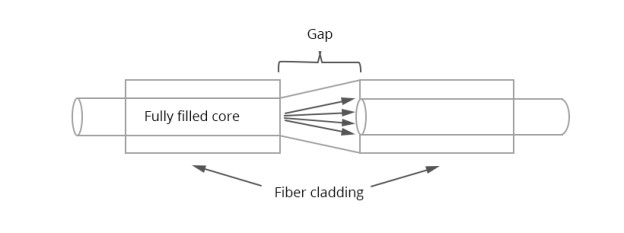
- Absorptive Principle: Absorptive principle or absorption reduces the light power by using the material in the optical path to absorb optical energy. This can be realized because optical fiber has the defect of absorbing optical energy and converting it into heat. It is both easy and effective to employ absorptive principle to obtain power loss.
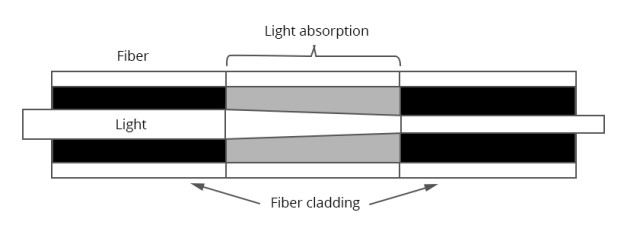
- Reflective Principle: Reflective principle or scattering causes the signal to scatter which is also a deficiency of optic fiber. The scattered light interferes with fiber to reduce the signal power. Since the material in attenuator is used to reflect a known quantity of the signal, only a desired portion of signal can be transmitted.
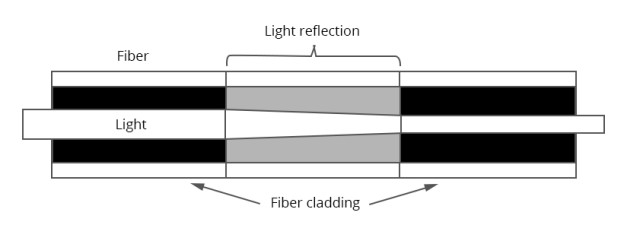
Common Fiber Optic Attenuator Types
- Fixed Attenuator: Fixed attenuator is able to deliver a precise power output when the desired level of attenuation is determined. It is usually applied to balance power between fibers and multifiber systems and reduce receiver saturation. Fixed attenuator is typically available in plug and inline styles for single-mode applications. Inline type looks like the ordinary fiber patch cord with the termination of two connectors. Plug type has a bulk head fiber connector with a male end and a female end.
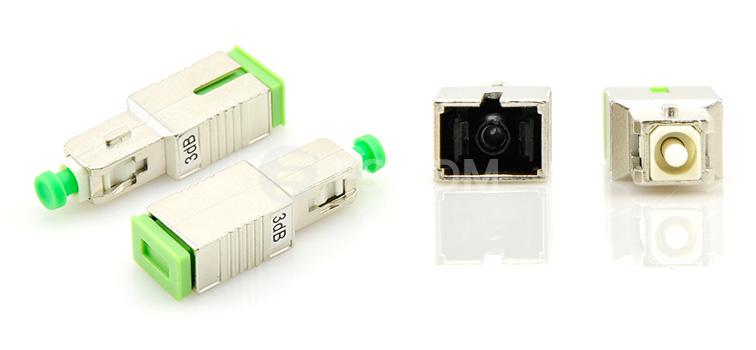
- Variable Attenuator: Variable attenuator delivers a precise power output at multiple decibel loss levels with flexible adjustment. The attenuation is easily modified to any level by simple adjustment controls. Variable attenuators can be further categorized as stepwise variable attenuator and continuously variable attenuator. The former changes the attenuation of signal in known steps such as 0.1 dB, 0.5 dB or 1 dB for multiple power sources applications. The latter allows attenuation to be changed on demand without any interruption to the circuit in uncontrolled environments where the input or output needs continuous change.
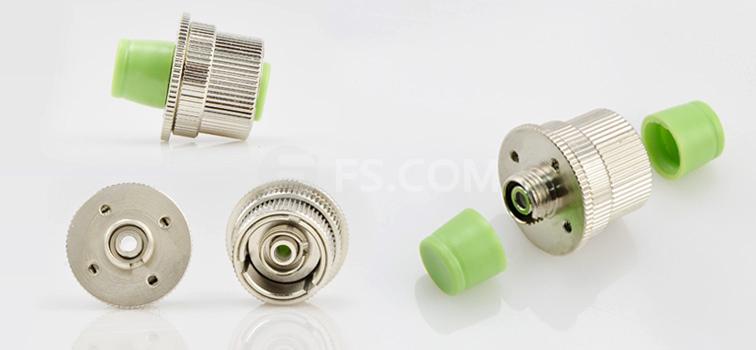
Conclusion
Fiber optic attenuator is an essential component for reducing optical power in data transmission. Signals achieve a more precise power level with the help of optical attenuators. According to different applications, you’d better choose the most appropriate type of optical attenuators for your system. Hope this article can provide some help for your future selection of optical attenuators.
没有评论:
发表评论